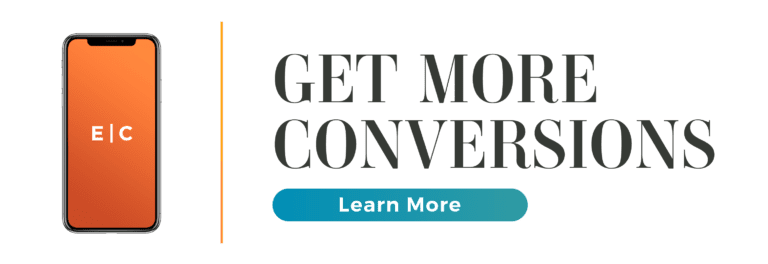Outbound marketing and inbound marketing are sometimes at war with one another. Typically, outbound methods are used by sales while inbound methods are used by marketing and, for some dumb reason, the two teams can sometimes war with one another over who gets the most leads and how. While some people see Outbound vs. Inbound as Old Ways vs. New School or even Sales vs. Marketing. The truth of the matter is that NO company can function to its best ability when the two sides of the marketing equation are at war with one another.
Traditional marketing (outbound) has lost a bit of its luster in the digital world. Cold calling and emailing can sometimes be a lot of work for little return and traditional advertising means are more expensive than digital channels for the most part. Just because inbound marketing is arguably more affordable (although don’t be fooled–large corporations pour just as much money into inbound as they do outbound), it doesn’t mean that you should just ignore outbound marketing completely. In fact, you should be leveraging both to the benefit of your overall marketing campaign.
The Difference Between Outbound and Inbound Marketing
Outbound marketing is about promoting a product or service by taking it (and the information about it) directly to your target audience. Think billboards, cold calls, TV and radio commercials, etc. These are all outbound tactics used to expose audiences to a product or service. The audience isn’t explicitly asking for this information – the businesses are trying to reach them where they are so they can get in front of as many of their targets as possible.
Inbound marketing is a little different. Inbound marketing focuses on providing relevant and engaging information to target audiences during their buyer journey – from research to loyal customer, inbound tactics are all about nurturing leads, fostering trust, and making long-term relationships with clients so they’ll come back again and again.
If it sounds kind of like a one night stand vs. a serious relationship, it’s not far off. Either way, there’s no reason not to swipe right on BOTH styles of marketing.
Using outbound marketing and inbound marketing together
Now that we know Outbound is more short-term and Inbound is more long-term, let’s talk about how we can use them together to fill your lead pipeline and make lasting relationships with your customers. The following are just a few examples of how inbound and outbound marketing can be BFFs (best friends forever, obviously):
-
Inbound marketing strategy can prepare prospects, outbound can close them
When it comes to inbound marketing, prospects tend to go through the first few stages of the buyer’s journey on their own. They figure out what their problem is, they do research to determine a solution, then they begin comparing products and services to find the best solution for them. The content that lives on your website can help to educate your prospects.
As you nurture your leads online through email marketing automated workflows and premium content offers, you may recommend that they visit an in-person event, such as a tradeshow. At that tradeshow, you may hand out flyers or give out free samples, both of which are outbound efforts. In a case like this, you may use inbound to nurture your prospects, then employ outbound strategies to close the sale.
2. Outbound advertising can generate leads to be nurtured by your inbound marketing strategy
More and more advertisers are realizing that their outbound efforts are rarely effective in closing sales right away, especially when it comes to tactics such as TV commercials. Few people are going to go out and buy a new car the moment they see a car commercial unless their need is urgent, which is not common. However, they are beginning to realize that people, in general, are watching TV with their smartphone or tablet nearby and that they’re often on social media during commercial breaks and during shows.
It’s why they’ve begun encouraging viewers to visit websites or check out their social media. They can do so right away. In fact, some advertisers even give viewers incentive to visit them digitally, such as going to a specific web address to receive a discount offer.
3. Smarketing helps get things done!
I know we’ve praised the idea of Smarketing before, but we really can’t emphasize enough how Outbound and Inbound (re: Sales and Marketing) working together not only creates a more holistic strategy but helps align two typically siloed departments and yields better campaigns and deliverables.
Think of it this way: Sales has a new initiative to focus on enterprise clients who work in a specific industry. Inbound tactics would mandate creating a buyer persona for your main target, discovering their pain points, and then creating relevant and useful content that answers their pain points, their FAQs, and uncovers how your product or service solves their problems. Blogs, case studies, ebooks, white papers, testimonials, infographics–all can be used to help nurture leads during various points in their buyer’s journey. Outbound tactics would work on reaching out to some targets to introduce the product and more directly ask for a consultation or appointment for a conversation. Outbound can utilize content created by Inbound to help create authority quickly with their cold leads and, if the lead doesn’t bite right away, outbound can send a “No” or “Not right now” into an inbound nurture workflow until the prospect is ready to turn that “No” or “Not right now.” into a “Let’s do this!”
An inbound marketing strategy may be the strategy of choice for many businesses, but that doesn’t mean outbound marketing doesn’t have its place. When both strategies work together, you have leads coming in from more channels, more frequently. You can’t argue with numbers (and why would you, you weirdo)!
-FINAL(01-00)-White&Blue-01.svg)





